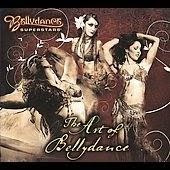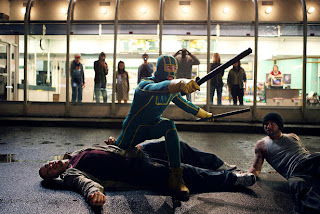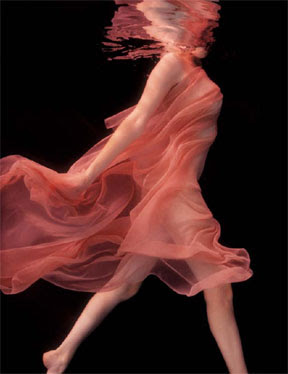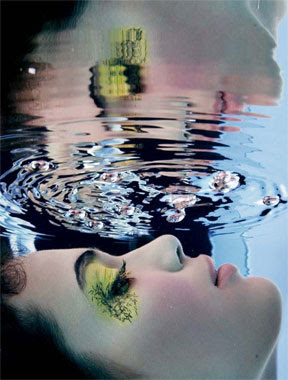 Did you know Elvis didn't die? And that he's fighting supernatural evil? Neither of these are as glamorous as they sound in Bubba Ho-Tep, a terrific adaption of Joe R. Landsale's short story. And Bruce Campbell playing Elvis is truly perfect casting.
Did you know Elvis didn't die? And that he's fighting supernatural evil? Neither of these are as glamorous as they sound in Bubba Ho-Tep, a terrific adaption of Joe R. Landsale's short story. And Bruce Campbell playing Elvis is truly perfect casting.Well, it turns out that many years ago Elvis, tired of the fame and drugs and selling out, switched places with Elvis impersonator Sebastian Haff. A trailer park explosion destroyed all proof of Elvis' true identity, and falling off a stage (yes, Elvis made his living impersonating himself) led to mental problems and a broken hip. Now Elvis is old and ornery, tired and cursing at folks in the Mud Creek Shady Rest Convalescent Home in Texas. He suffers through strokes, a nurse (Ella Joyce) who doesn't believe him, needing a walker to get around, and a growth that may be cancerous.
 Something is rotten in Shady Rest: A mummy, wearing cowboy hat and boots, is feeding on the souls of the residents. (Two undertakers hauling a body bag to their waiting hearse is a repeated scnee.) The only person besides Elvis who knows about this creature is Jack (Ossie Davis, in one of his last roles), who gets a lot of information on the creature. Of course Jack thinks that he is JFK, even having an elaborate conspiracy theory to explain how he wound up there. ("They dyed me this color!")
Something is rotten in Shady Rest: A mummy, wearing cowboy hat and boots, is feeding on the souls of the residents. (Two undertakers hauling a body bag to their waiting hearse is a repeated scnee.) The only person besides Elvis who knows about this creature is Jack (Ossie Davis, in one of his last roles), who gets a lot of information on the creature. Of course Jack thinks that he is JFK, even having an elaborate conspiracy theory to explain how he wound up there. ("They dyed me this color!")Bubba Ho-Tep is directed by Don Coscarelli, who has done several other horror movies (including the Phantasm series) and he does a terrific job balancing the comedy and horror of the material. The characters aren't goofy, cuddly eccentrics but foul-mouthed people frustrated by the ravages of age.
 Speaking of the actors, the leads are wonderful. Bruce Campbell always does cocky well, and here it's tempered with the bitterness of a very steep decline. Ossie Davis also has fun with his role, delivering outrageous theories with a deadpan delivery and conducting himself with so much dignity, by the end you may think he is JFK. (He's not. I think.)
Speaking of the actors, the leads are wonderful. Bruce Campbell always does cocky well, and here it's tempered with the bitterness of a very steep decline. Ossie Davis also has fun with his role, delivering outrageous theories with a deadpan delivery and conducting himself with so much dignity, by the end you may think he is JFK. (He's not. I think.)The horror in Bubba Ho-Tep is not all that scary (charging with a motorized wheelchair, battling a scarab beetle with a bedpan) but the acting and execution is great. Dvd extras include commentaries (including Bruce Campbell doing a commentary as Elvis), Joe R. Lansdale reading some of the original story, and deleted scenes.
Bubba Ho-Tep is goofy, it's foul-mouthed, and it's tremendous fun. Hail to the King!
Overall grade: A-
Reviewed by James Lynch


























